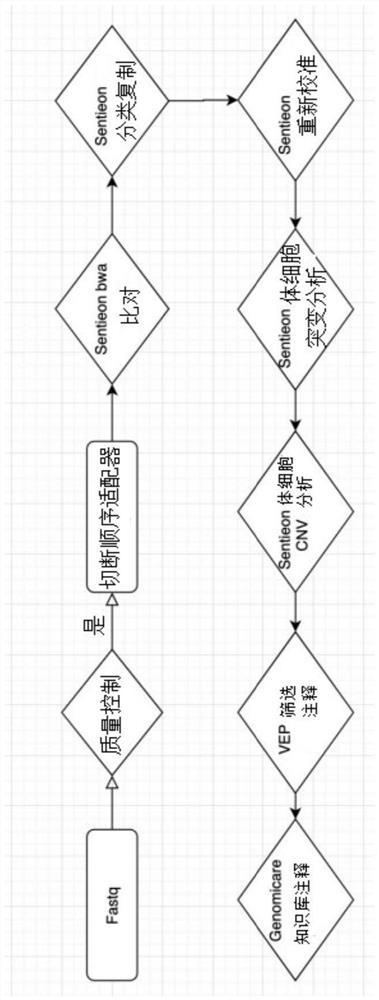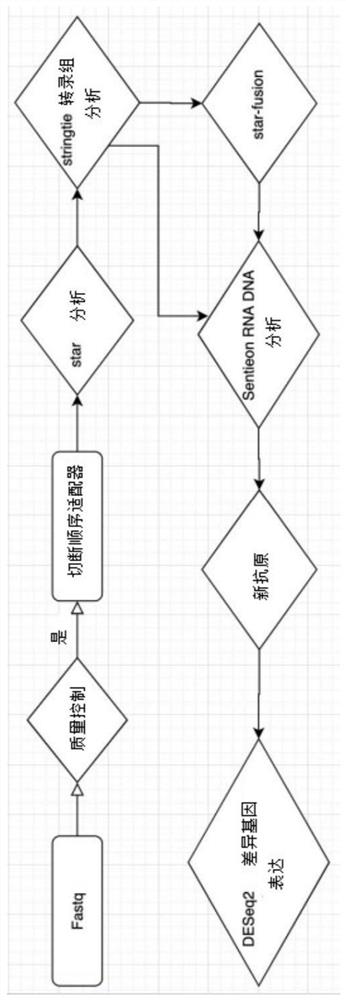Prediction method for synergistic drug combination
A drug and combination technology, applied in the direction of drugs or prescriptions, drug reference, bioinformatics, etc., can solve problems such as difficulties
- Summary
- Abstract
- Description
- Claims
- Application Information
AI Technical Summary
Problems solved by technology
Method used
Image
Examples
Embodiment 1
[0059] Example 1. Synergistic Combination of Lenvatinib and PD-1 / PD-L1 Immune Checkpoint Inhibitors in the Treatment of Liver Cancer (Hepatocellular Carcinoma) and Intrahepatic Cholangiocarcinoma (Intrahepatic Cholangiocarcinoma)
[0060] Figure 7 Shown are real survival data of PD-1 / PD-L1 inhibitor combined with lenvatinib in 105 Chinese patients with hepatocellular carcinoma and intrahepatic cholangiocarcinoma, and the evaluation of the ECPH model-based method involved in the present invention. Survival curves in blue (top) are for 46 patients receiving lenvatinib and PD-1 / PD-L1 inhibitor, while survival curves in orange (bottom) are for 59 patients who received PD-1 / PD-L1 inhibition only group of patients treated with the drug. Lenvatinib was a statistically independent good prognostic factor in hepatocellular carcinoma and intrahepatic cholangiocarcinoma following PD-1 / PD-L1 inhibitor therapy. Survival in the combined patient group (lenvatinib and PD-1 / PD-L1) was statis...
Embodiment 2
[0118] Example 2. Combination of resistance (drug resistance) with HLA biomarkers of PD-1 / PD-L1 immune checkpoint inhibitors.
[0119] In this example, a specific HLA-B biomarker was considered as a second factor, which was assessed in a similar manner to that outlined above for combination therapy with PD-1 / PD-L1 drugs. For example, a 2×2 contingency table can be built:
[0120]
[0121] Figure 8Shows true survival data using PD-1 / PD-L1 inhibitors in 445 Chinese patients with hepatocellular carcinoma, cholangiocarcinoma, glioma, lung adenocarcinoma, and soft tissue sarcoma with HLA-B*15:01 factor, and Evaluation data for the ECPH model-based method of the present invention. Survival curves in blue (bottom) are the patient group of 47 HLA-B*15:01 plus PD-1 / PD-L1 inhibitors, while orange (top) curves are 398 HLA-B*15:01 without There was a patient group that added PD-1 / PD-L1 inhibitors. HLA-B*15:01 was a statistically independent major poor prognostic factor in solid tu...
PUM
 Login to View More
Login to View More Abstract
Description
Claims
Application Information
 Login to View More
Login to View More - R&D
- Intellectual Property
- Life Sciences
- Materials
- Tech Scout
- Unparalleled Data Quality
- Higher Quality Content
- 60% Fewer Hallucinations
Browse by: Latest US Patents, China's latest patents, Technical Efficacy Thesaurus, Application Domain, Technology Topic, Popular Technical Reports.
© 2025 PatSnap. All rights reserved.Legal|Privacy policy|Modern Slavery Act Transparency Statement|Sitemap|About US| Contact US: help@patsnap.com



